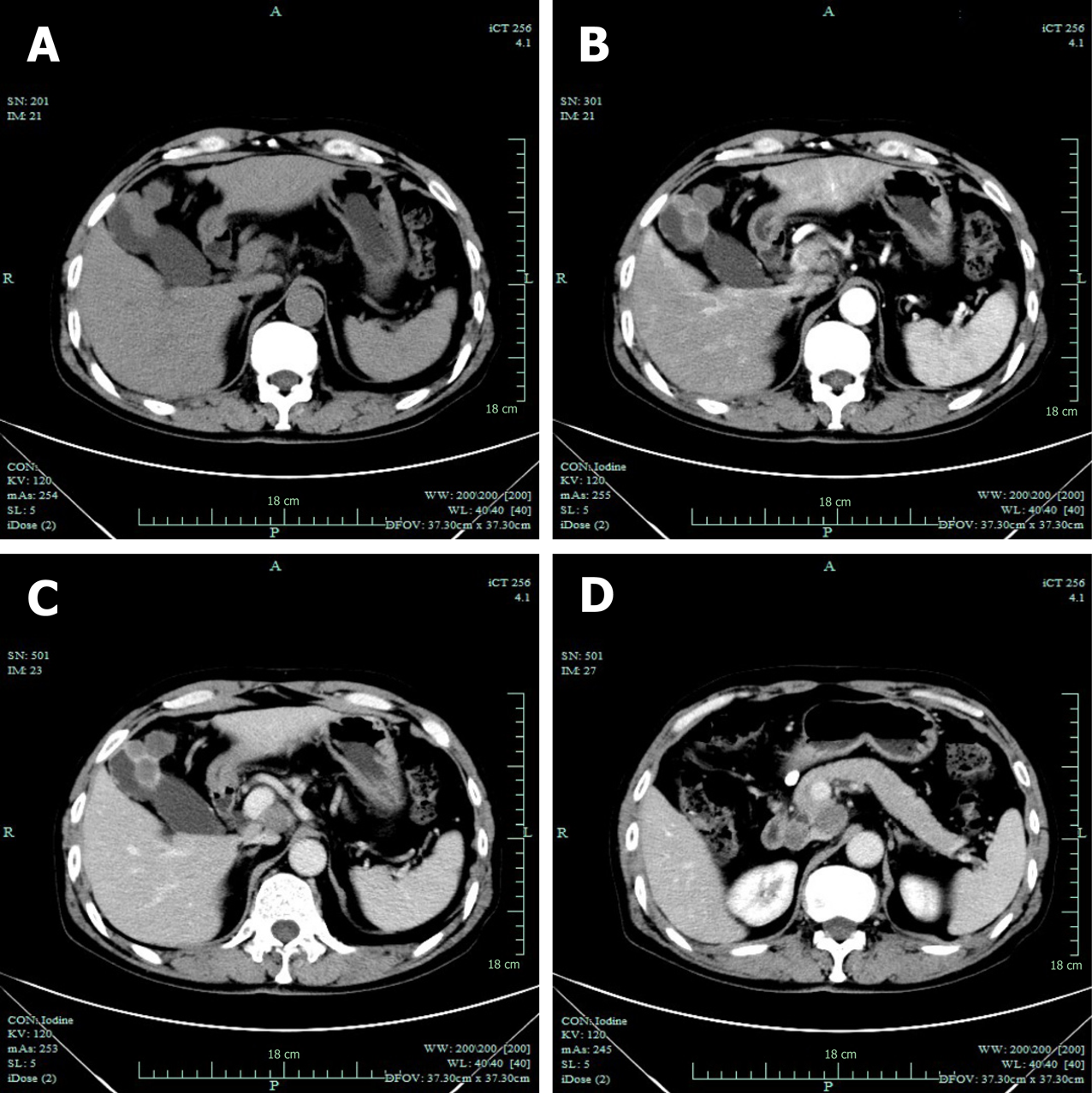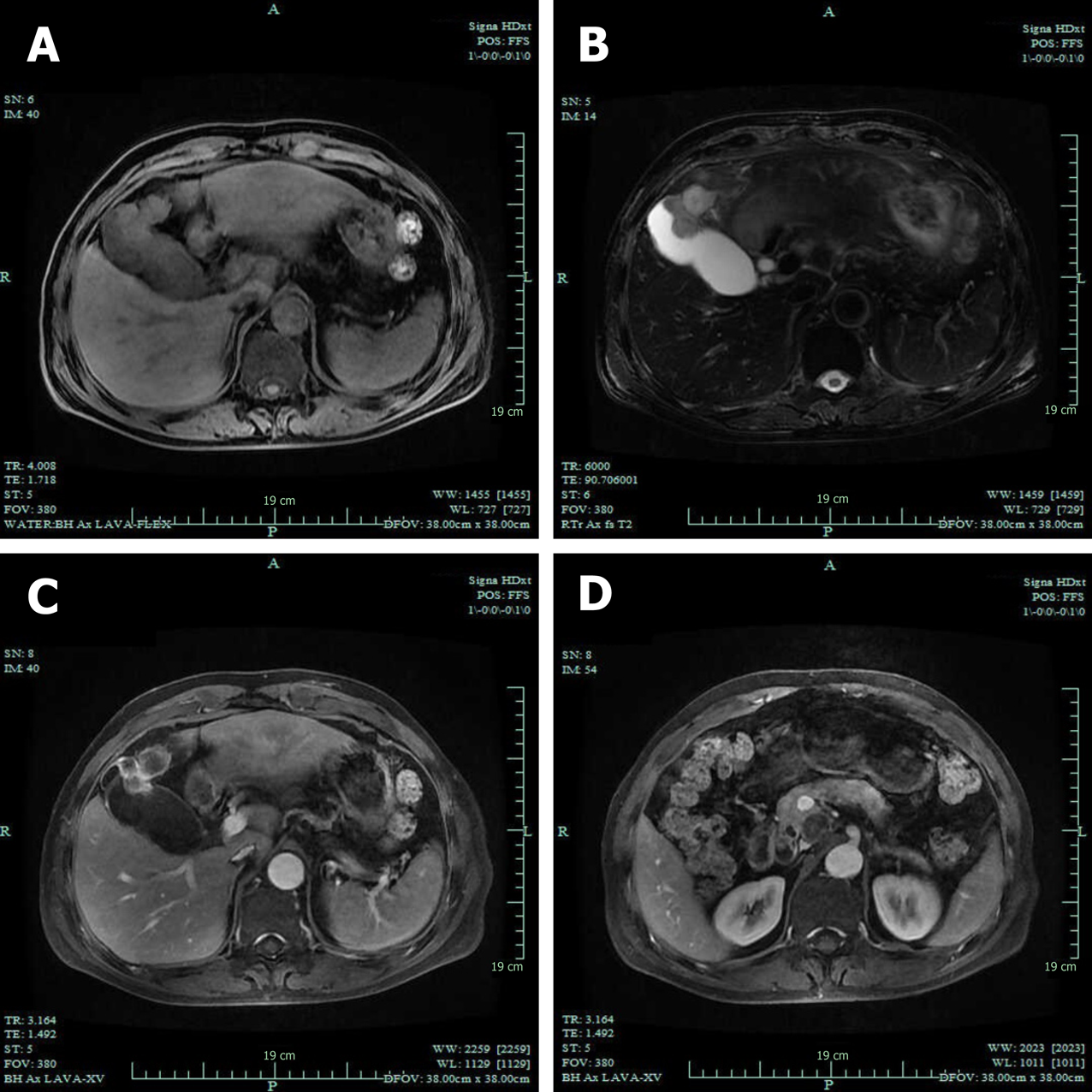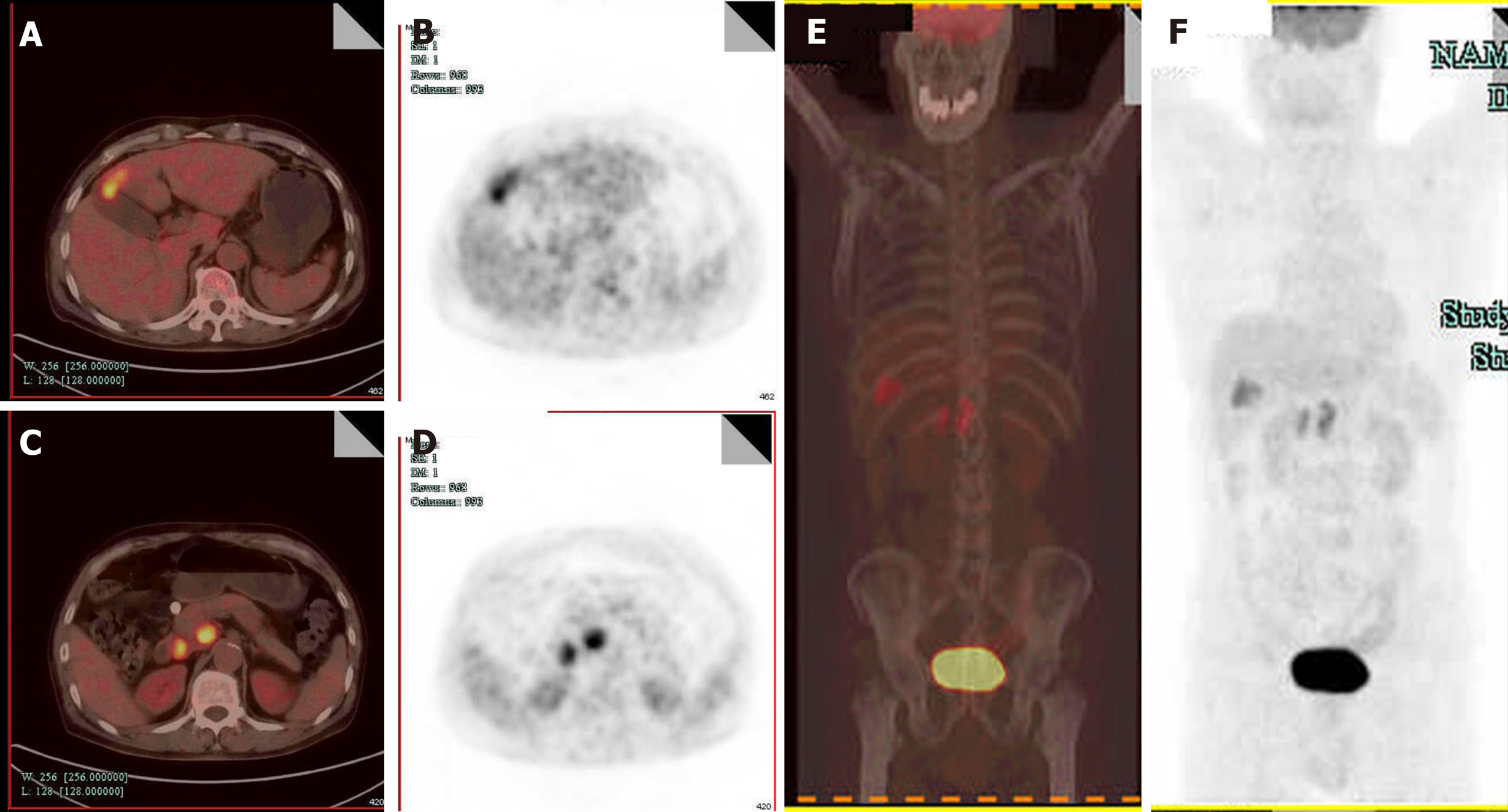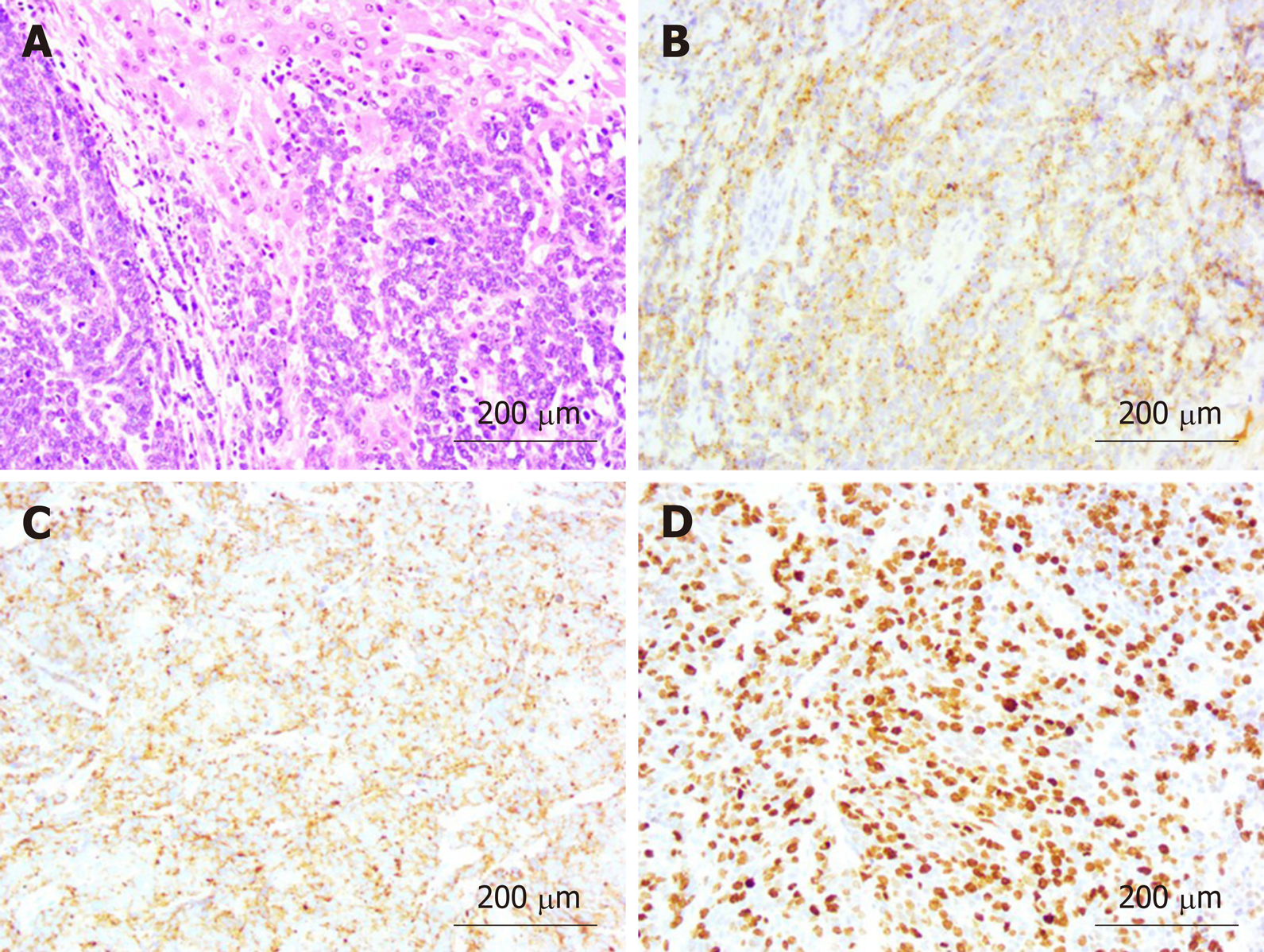Copyright
©The Author(s) 2020.
World J Gastroenterol. Feb 14, 2020; 26(6): 686-695
Published online Feb 14, 2020. doi: 10.3748/wjg.v26.i6.686
Published online Feb 14, 2020. doi: 10.3748/wjg.v26.i6.686
Figure 1 Visible changes of the skin.
A, B: The skin over the face, neck, upper chest, and limbs was flushed, accompanied by desquamation before surgery; C, D: Flushing was obviously relieved on day 5 postoperatively; E, F: At 2 wk after surgery, flushing faded entirely and skin pigmentation was visible.
Figure 2 Computed tomography examination.
A: Gallbladder neoplasm was visible in unenhanced imagery; B: Gallbladder neoplasm was mildly enhanced in arterial phases; C: Gallbladder neoplasm was mildly enhanced in venous phases; D: Enlarged lymph nodes were seen in the portacaval space.
Figure 3 Magnetic resonance imaging examination.
A: The gallbladder neoplasm was revealed with liver invasion on T1-weighted imaging; B: The gallbladder neoplasm was revealed with liver invasion on T2-weighted imaging; C: The neoplasm showed increased signals in contrast-enhanced phase; D: Several enlarged lymph nodes were found in the portacaval space.
Figure 4 Positron emission tomography examination.
A, B: Fluorodeoxyglucose uptake was higher in the gallbladder; C, D: Fluorodeoxyglucose uptake was higher in lymph nodes in the portacaval space; E, F: Fluorodeoxyglucose uptake did not significantly increase in other tissue.
Figure 5 Pathological examination and immunohistochemical staining (20 ×).
A: Hematoxylin and eosin staining revealed poorly differentiated gallbladder neuroendocrine carcinoma with liver invasion; B: Immunohistochemical staining revealed positive expression of chromogranin A; C: Immunohistochemical staining revealed positive expression of synaptophysin; D: Immunohistochemical staining revealed that the Ki-67 index was > 80%.
- Citation: Jin M, Zhou B, Jiang XL, Zhang QY, Zheng X, Jiang YC, Yan S. Flushing as atypical initial presentation of functional gallbladder neuroendocrine carcinoma: A case report. World J Gastroenterol 2020; 26(6): 686-695
- URL: https://www.wjgnet.com/1007-9327/full/v26/i6/686.htm
- DOI: https://dx.doi.org/10.3748/wjg.v26.i6.686













